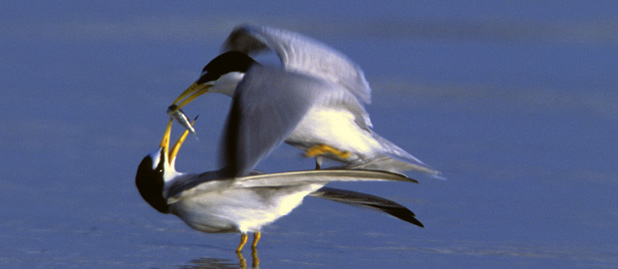|
Bird Conservation Issues in the Americas
The world of bird conservation in the Americas is vast and complex. Birds are at risk from many factors, each one of which rarely exists in isolation.
Some issues are habitat-based, having broad-scale effects across entire landscapes. This category is the most significant in terms of overall impact to birds. Other issues have narrower, site-based implications. Both habitat and site-based threats tend to affect the ability of birds to successfully breed and maintain viable populations. Mortality threats affect bird populations directly through the killing of large numbers of individuals. In recent decades there has been increasingly wide recognition of the burgeoning threat of global climate change. While most of the effects of global warming occur at the habitat-level, it is such a vast and complex issue that we treat it separately here.
Whatever the issue, it is important to consider cumulative impacts on birds. Five Cerulean Warblers killed at a communications tower in one night will not affect the Cerulean population as a whole. But consider that single tower's impact night after night, year after year, and then combine that with all the other towers in the country. If you then combine that impact with the effects of mountaintop mining on the warbler's breeding grounds, loss of habitat due to agriculture on its wintering grounds, and the effects (both lethal and sub-lethal) of pesticide poisoning, and we begin to see the extent of the problem that this and many other species face.
By clicking on the links below for the different topics, you can read about the issues affecting birds in the Americas and how ABC approaches them. Some of these issues have become full-fledged ABC programs, and they are dealt with in more detail.
|





